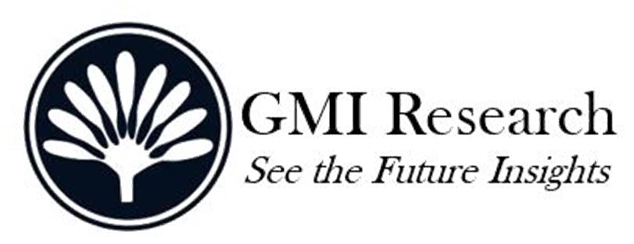China Cosmetics Market is expected to witness a CAGR of approximately 7.8% during the forecast period, 2024-2031, driven by increasing income levels, an expanding middle class along with a surge in e-commerce and social media networking channels.

Major China Cosmetics Market Drivers and Emerging Trends
Consumer preferences and habits in the cosmetics market in China are continually influenced by multiple factors such as shifting demographics and increasing incomes. Recent years have seen notable demographic changes in China with a rapidly expanding middle class and growing income. This rising income has naturally driven consumers to spend more on beauty products and personal care. Consequently, market growth is primarily fueled by the middle class who possess greater income and an increasing tendency to invest in self-care and personal grooming.
As consumers increasingly seek better experiences and higher quality, the need for luxury beauty items continue to grow which drives the overall China cosmetics market size expansion. This shifting trend has led to the emergence of premiumization with high end brands experiencing significant growth especially as female consumers focus more on self-investment and link beauty to the burgeoning self-care trends.
Why Purchase a Standard Report When You Can Customize this Report
Please Let us know your Customization Requirements
Social media networking platforms and e-commerce are also having a profound impact on consumer habits which leads to notable changes in purchasing trends. Douyin has seen a remarkable 164 percent rise in beauty item sales while influencer investments on XiaoHongShu have grown by more than 100 percent annually. These platforms have notably transformed into new shopping hubs for Chinese consumers who are increasingly looking for beauty recommendations and purchasing options.
E-commerce platforms in the country are playing a pivotal role in shaping consumer purchases by offering a space for the beauty community to exchange product experiences. Livestreaming has quickly evolved into a major sales avenue for cosmetics within online channels which attracts consumers who are comfortable shopping through their smartphones. With its market share doubling between 2019 and 2020, livestreaming now constitutes around 10 percent of e-commerce in China which positions it as a crucial aspect of any effective multi-channel sales approach. Utilizing online channels for sales presents fewer challenges for many brands as the regulatory landscape is distinct from that of traditional retail stores.
Terms such as organic and natural have become key factors in driving consumer buying preferences in China cosmetic market trends. The demand for natural products is rising as consumers appreciate their superior quality and minimal harmful components. However, it is important to note that even though this cosmetics sector offers promising opportunities especially for foreign brands, regulatory framework in the country does not currently recognize this category while officials remain cautious about these emerging ideas. Consequently, it is essential for companies entering this particular segment to gain a complete understanding of the regulations that govern organic cosmetics in China.
Beauty industry in China has increased its focus on safety and quality control regulation thereby it is important for companies in this sector to familiarize themselves with the latest regulatory guidelines. Even though stringent quality control approaches have been introduced, the new regulations represent a positive shift for foreign businesses. It offers greater transparency and assurance in the Chinese market which creates a more advantageous condition for international businesses than it has been in the past.
The market can be segmented by product type into skincare, fragrance, makeup, and others with skincare leading the market. Chinese beauty brands are increasing their research focus to meet essential consumer demands which include sun protection, whitening, and anti-aging. Consumers are increasingly attracted to clinical brands developed by chemists and doctors as they are motivated by the demand for proven effectiveness. Premium brands have a competitive edge as they address the specific skincare issues faced by consumers.
The market can be categorized based on the distribution channel into online and offline segments. The online category is dominating the market as consumers invest considerable time online researching and assessing beauty products. E-commerce platforms in China have exponentially increased their influence on consumer behavior as they offer a space for the beauty community to connect and share product suggestions. The limited brand diversity and restricted access to physical stores are also making online platforms popular among Chinese consumers.
However, the offline segment continues to play a vital role as it allows consumers to meet their needs for safety and a luxurious experience. Experiences in physical stores including beauty classes and attractive visual displays fulfill these consumer needs.
The market is extensive and fiercely competitive marked by substantial involvement from local and global market players. Domestic brands have gained significant visibility by catering to local preferences and adopting competitive pricing tactics. Prominent brands like Pechoin and Herborist have effectively captured market share by recognizing and meeting the unique needs of Chinese consumers. Global brands have made substantial investments in China and tailoring their products to align with the local consumers specific preferences. Famous brands including L’Oreal and Shiseido have built a solid presence in China as they utilize their worldwide reputation in the beauty industry.
Top Market Players
Various notable players operating in the market include Pechoin, Herborist, L’Oreal, Shiseido and several others.
Segments covered in the Report:
The China Cosmetic Market has been segmented on the basis of product and distribution channel. Based on the product, the market is segmented into skin care, hair care, makeup, fragrance, others. Based on the distribution channel, the market is segmented into offline, online.
|
Report Coverage |
Details |
| Market Revenues (2023) |
USD Million |
| Market Base Year |
2023 |
| Market Forecast Period |
2024-2031 |
| Base Year & Forecast Units |
Revenues (USD Million) |
| Market Segment | By Product, By Distribution Channel |
| Regional Coverage | China |
| Companies Profiled | Pechoin, Herborist, L’Oreal, Shiseido, among others; a total of 4 companies covered. |
| 25% Free Customization Available | We will customize this report up to 25% as a free customization to address our client’s specific requirements |
Market Segmentation
China Cosmetic Market by Product
-
- Skin Care
- Hair Care
- Makeup
- Fragrance
- Others
China Cosmetic Market by Distribution Channel
-
- Offline
- Online
China Cosmetic Market Leading players (Option 1: Free 25% Customization – Profiles of 5 Additional Companies of your Choice)
-
- Pechoin
- Herborist
- L’Orea
- Shiseido
Frequently Asked Question About This Report
China Cosmetics Market [GR24AB-01-00342]
Global brands have made substantial investments in China and tailoring their products to align with the local consumers specific preferences.
The market is growing driven by increasing income levels, an expanding middle class along with a surge in e-commerce and social media networking channels.
China Cosmetic Market is expected to witness a CAGR of approximately 7.8% during the forecast period, 2024-2031
Terms such as organic and natural have become key factors in driving consumer buying preferences in China cosmetic market trends.
Related Reports
- Published Date: Dec-2024
- Report Format: Excel/PPT
- Report Code: GR24AB-01-00342
Licensing Options
Single-User License:
The report is used by the purchaser (One Individual) only
Multi-User License:Report is shared with maximum 5 users (employees) including the purchaser of the purchasing corporation only
Corporate License:
Report is shared with unlimited user (employees) of the purchasing corporation only
The report is used by the purchaser (One Individual) only
Multi-User License:Report is shared with maximum 5 users (employees) including the purchaser of the purchasing corporation only
Corporate License:
Report is shared with unlimited user (employees) of the purchasing corporation only
China Cosmetics Market and Analysis Report – Opportunities and Forecast 2024-2031
$ 4,499.00 – $ 6,649.00
Why GMI Research







